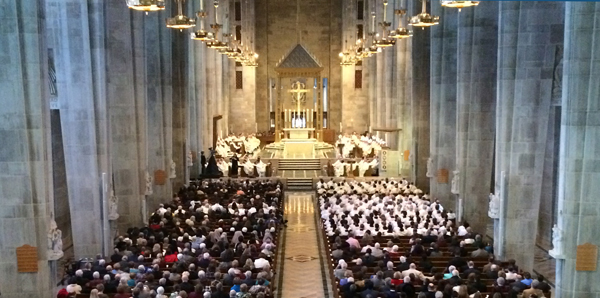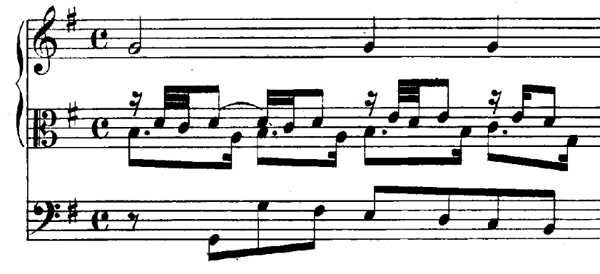Hello 2017!
I was planning a column for the Christmas season when they announced the appointment of two new auxiliary bishops for the Archdiocese of Baltimore. Their ordination was scheduled for January 19, so the crazy Advent-Christmas scheduled for a couple of weeks longer. The ordination even provided an improvisation challenge: how can you stretch an entrance procession to cover 500 people walking into the building?

Maybe it was only 450, but everyone in the upper and lower sanctuary as well as all the people in white on the right entered in procession. We did two hymns with interludes after every verse. What’s the longest procession you’ve played for? What did you do to keep the music interesting?
Kansas
As I was catching up on my reading after the holidays, I discovered that the American Guild of Organists has scheduled their next pedagogy conference, and its focus is improvisation! Organ and Improvisation Study in the French Conservatoire System will be held October 18 – 21, 2017 at The University of Kansas. I promptly signed up to attend. The lineup includes Olivier Latry, Michel Bouvard, Vincent DuBois and Philippe Lefebvre. More information is available at:
http://agopedagogyconference.music.ku.edu/
Please let me know if you plan to be there.
Simple Christmas Music
So the idea I wanted to get out for Christmas was based on one of the Orgelbüchlein chorales: Der Tag, der ist so freudenreich, BWV 605. The score (with a little alto clef for fun) starts like this:

At least in the US, virtually no one will recognize this as a Christmas tune, but the structure of the piece is simple enough that I thought it could be easily applied to Christmas tunes that people do know. The soprano is a straightforward presentation of the tune on a solo stop. The bass is a very simple harmonic bass with occasional passing tones. The interest of the piece comes from the treatment of the alto and tenor. The tenor has a dotted eighth and sixteenth note pattern while the alto fills in between the two tenor notes with either two thirty-second notes or a sixteenth note before finishing the beat with an eighth note.
The rhythmic pattern simplifies into or can be derived from a standard 4-part chorale harmonization very easily. I opened the hymnal at random and applied it to a few Christmas tunes: While Shepherds Watched (WINCHESTER OLD), How Brightly Shines (WIE SCHÖN LEUCHTET), and Good Christian Friends, Rejoice (IN DULCI JUBILO). While Christmas is over, you could certainly do the same with tunes from other seasons.
NPM
In other news, I have been asked to lead an organ masterclass at the National Pastoral Musicians Conference this summer in Cincinnati. The masterclass will cover repertoire or improvisation according to what the student wishes to work on. If you’d like to participate, please check out the convention brochure.
I hope you had a wonderful holiday season and that 2017 is off to a fabulous beginning for you.
Glenn
Newsletter Issue 62 – 2017 01 30
See the complete list of past newsletter issues here.
Sign up to receive future issues using the box to the right on this page.
